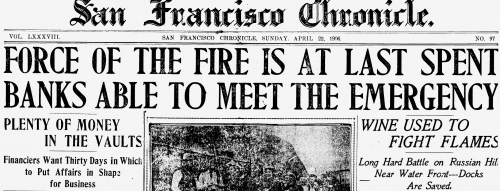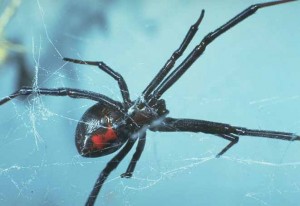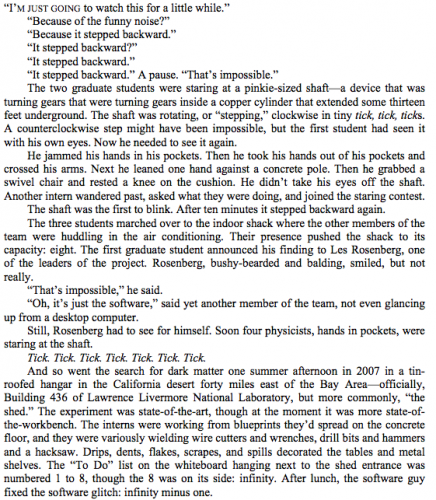 I received an email the other day from Nicholas Suntzeff, the director of the Astronomy Program at Texas A&M as well as a friend. (Readers might remember that he has published two guest posts with LWON.) His email was in fact a series of emails that he thought I might enjoy. It started with a link to an article that Nick sent to a colleague at Texas A&M, and then one thing led to another, and before long they were trading stories about odd, weird, you-couldn’t-make-this-stuff-up historical details from their adventures in astronomy over the past three decades. At one point in their reminiscences, Suntzeff sighed (if only virtually), “Becoming interested in history is a disease many astronomers get as they age.”
I received an email the other day from Nicholas Suntzeff, the director of the Astronomy Program at Texas A&M as well as a friend. (Readers might remember that he has published two guest posts with LWON.) His email was in fact a series of emails that he thought I might enjoy. It started with a link to an article that Nick sent to a colleague at Texas A&M, and then one thing led to another, and before long they were trading stories about odd, weird, you-couldn’t-make-this-stuff-up historical details from their adventures in astronomy over the past three decades. At one point in their reminiscences, Suntzeff sighed (if only virtually), “Becoming interested in history is a disease many astronomers get as they age.”
That statement in particular got me thinking. From interviewing Suntzeff for a book, I knew that he enjoyed the living history of astronomy. He had spoken fondly of cloudy nights he’d spent as a young astronomer at an observatory in Chile; the telescope out of commission, he would retire to the library and explore the archives or, better yet, sit and listen to stories from Allan Sandage, who had long ago been Edwin Hubble’s assistant, and who was a formidable astronomer in his own right, as well as a raconteur par excellence. I myself once spent a couple of days with Sandage for a magazine profile, after he had retired from astronomy but while he still regularly went into his office at the Carnegie Observatories headquarters in Pasadena. He’d come down with the history disease, too. He talked about salvaging old books that young colleagues would leave in the office’s discard pile; he walked me through cabinets full of fifty- or sixty-year-old photographic plates and daily observing logs. “The library is my telescope now,” he said.
The link in the email that started Suntzeff’s exchange with his colleague led to an article titled, “How Astronomy Benefits Society and Humankind.” Among the supposed benefits was the CCD. Suntzeff’s friend objected. Yes, the CCD had truly revolutionized astronomy, but it wasn’t invented for astronomy. Still, the mention of the technology led them to recall their own first experiences with CCD’s, in the late 1970s and into the 1980s, which in turn led Suntzeff to other anecdotes.
 He recalled using 1930s photographic plates from the Lick Observatory in his research: “the plastic was thick enough that I guess it kept its shape.” Oh, and speaking of Lick—what about the optician there who kept a black widow spider supposedly so he could use the thin, strong silk from her web in reticles?
He recalled using 1930s photographic plates from the Lick Observatory in his research: “the plastic was thick enough that I guess it kept its shape.” Oh, and speaking of Lick—what about the optician there who kept a black widow spider supposedly so he could use the thin, strong silk from her web in reticles?
Also? The superintendent at Lick had once given Suntzeff a tour of the original electrical wiring at the observatory, the first electrical wiring on the West Coast; Thomas Edison himself had overseen the installation.
“During WWII,” Suntzeff continued, “a plane crashed into the main building. You can still see the score marks in the marble floors. But what visitors don’t see is the mess in the basement where the plane leaked oil and kerosene into the dirt. It still smells like oil down there.”
He was on a roll.
“As you know, observatories never throw stuff away. Who knows? That old spectrograph could be useful someday. So both Lick and Mt Wilson had the most amazing pile of junk in their basements that I have ever seen. I really wanted to play with some of the stuff, but never had time to because, well, I had to finish my thesis and get a job. But at Lick”—an observatory southeast of the Bay Area—”there were all these old boxes of photographic plates carefully stored. Inside were old plates of the Sun that were pretty much useless. Plates from like 1900 or so. But what was cool was that they were wrapped in newspapers of the time. I went through a box or two to see if there were newspapers from 1906 and the SF earthquake, but not surprisingly there were not. There were somewhat later ones showing the continuing damage which were interesting to read.”
As it happens, I’ve been thinking a lot lately about odd and illuminating details that give science a human face. Last week I posted a piece here on engineers using masking tape to keep a $271 million experiment at the South Pole functional. It was the kind of detail that I never could have predicted, but it’s the kind of detail that, if you’re a writer, you hope to find.
A few years ago I needed to do some research on an experiment at Lawrence Livermore National Laboratory, and I planned a two-day visit. My purpose, of course, was to understand the experiment. But I could have tried to do that by phone and email, and through reading journal articles. My real motivation was the possibility of observing something unpredictable, a detail that would be both human and aptly metaphorical. Within minutes of my arrival, I had witnessed it. (For the curious, you can read the resulting passage at the bottom of this post*.) I knew it the moment it happened. Then I was left standing there, thinking, “Now what? I’ve got two more days here.” So I went about gathering information and conducting interviews and doing all the other usual research stuff. But really, my work was done.
The article that Suntzeff linked to, the one that started the exchange with his colleague, implied that the benefits of astronomy to society come from its byproducts, the technology that falls out of the investigative process. True, byproducts do fall out of science all the time. But you can’t go to a funding agency for a scientific project—or, if you’re a student, propose a thesis—using the argument that you never know what bit of serendipity might come your way.
“Maybe the lesson,” I wrote to Suntzeff, “is something like this: In science, you can’t justify expenses in the hope of secondary benefits. In art, you can; you must. From a scientific standpoint, the photographs of the Sun were useless; from an artistic standpoint, the newspapers they were wrapped in were not. You write, ‘Becoming interested in history is a disease many astronomers get as they age.’ But maybe it’s just the artist in them coming out.”
• • •
Credit (bottom): Extension Entomology, Texas A&M University
* For the curious, here’s the excerpt I mentioned—the beginning of Chapter 10 in The 4% Universe: Dark Matter, Dark Energy, and the Race to Discover the Rest of Reality:

I love this!! The wonderfully unexpected.. and history. I find myself delving into all kinds of odd things.
The plane crash at Lick Observatory was actually in the 1930s before World War II.